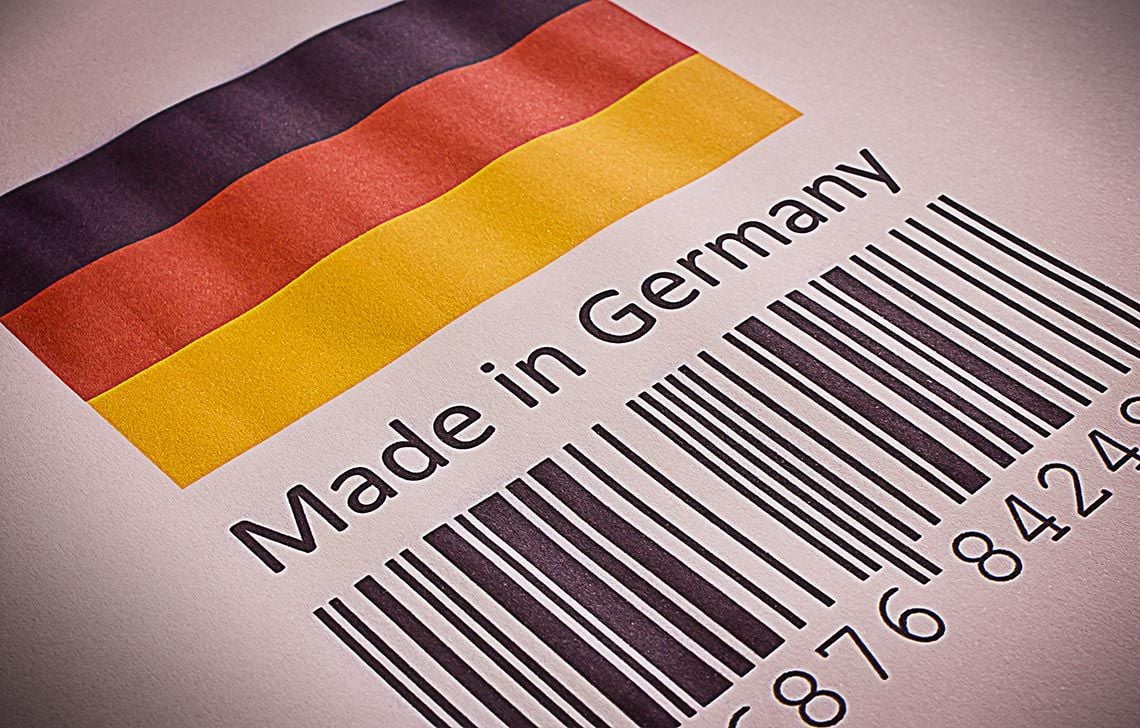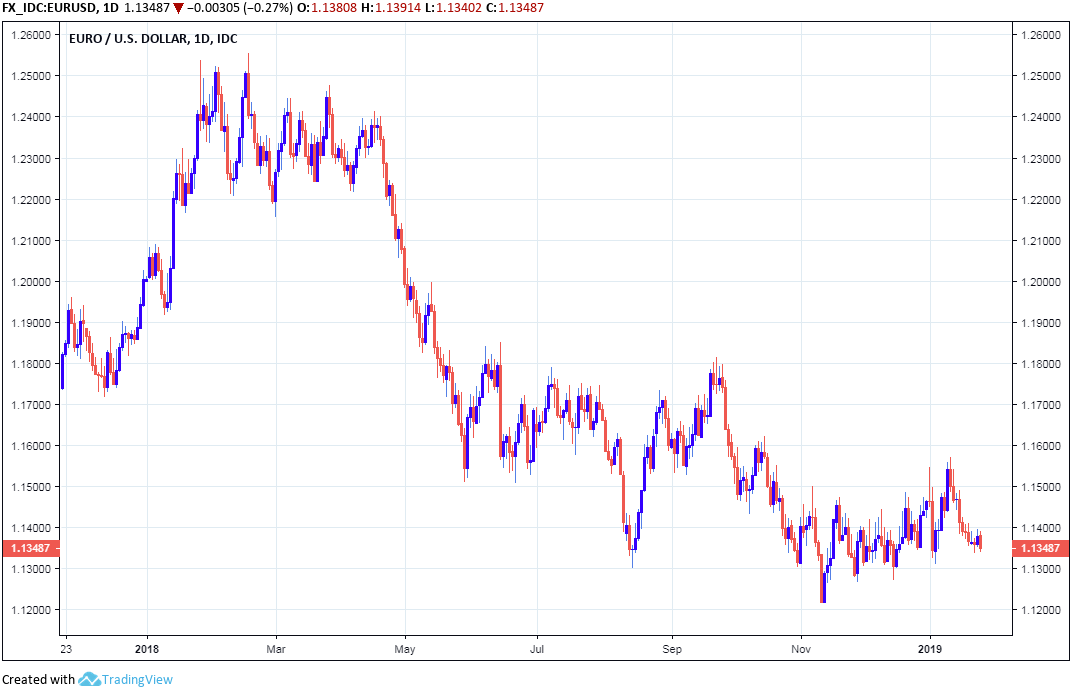Euro-to-Dollar Rate Hits Deck after German Manufacturing PMI Shows Sector in Recession
- Written by: James Skinner

© Open Water, Adobe Stock
- EUR slides as PMIs show German manufacturers entering recession.
- IHS sees fastest fall in new orders for 6 years, slowdown gathers pace.
- Data comes ahead of key ECB meeting, puts EUR outlook under threat.
The Euro hit the deck Thursday after IHS Markit PMI data suggested the mighty German manufacturing sector is headed for a recession, just hours before the European Central Bank (ECB) is scheduled to deliver its latest assessment of the Eurozone economy and interest rate outlook.
The German manufacturing PMI fell to 49.9 in January, down from 51.5 in December and far below the consensus for a modest increase to 51.5. For markets, this more than offset a pick-up in services sector activity at the beginning of the New Year.
"Lower demand in overseas markets (particularly China) and heightened uncertainty were all highlighted as factors. New export orders fell at an accelerated rate across both monitored sectors during the month," IHS says.
PMI surveys measure changes in industry activity by asking respondents to rate conditions for employment, production, new orders, prices, deliveries and inventories. A number above the 50.0 level indicates industry expansion while a number below is consistent with contraction.
Markets care about PMI data because it is an important indicator of momentum within the economy. And economic growth has direct bearing on consumer price pressures, which dictate where interest rates will go next.
"The lack of recovery in January will add to the heated debate about the state of the economy at today’s ECB meeting," says Bert Colijn, an economist at ING.
Growth in manufacturing output slumped in January although remains in positive territory, with the output index falling to a 69-month low of 50.2, down from 51.5 in December. However, and of more concern to the market, new order inflows fell at their fastest pace for six years.
Inflows of new business for the combined manufacturing and services sector registered their first fall since December 2014 in January, as manufacturing order books contracted for the fourth consecutive month, which is a negative omen for output over the coming months.
"The persistent slowdown in German manufacturing is a red flag. The Eurozone economy needs solid growth in its core manufacturing sector to perform at its best, and at the moment, it seems like growth here is falling off a cliff, almost that is," says Claus Vistesen, an economist at Pantheon Macroeconomics.

Above: Euro-to-Dollar rate shown at daily intervals.
The Euro was quoted -0.33% lower at 1.1348 against the Dollar following the release after having fallen from 1.1378 at the European open, while the Euro-to-Pound rate was -0.07% lower at 0.8697.
"The ECB meets Thursday and will have to acknowledge that the economy isn't doing well. Hard, then, to see where we get any positive euro news as expectations of a policy reaction (another TLTRO) grow. We think it's too soon for that but while we may struggle with EUR/GBP shorts this week, EUR/JPY and EUR/AUD shorts still appeal and more importantly, a test of the lower end of the recent EUR/USD 1.13-1.15 range is possible," says Kit Juckes, chief FX strategist at Societe Generale.
Juckes and the Soc Gen team advocated selling the Euro relative to the Japanese Yen and Australian Dollar earlier this week, in anticipation of negative commentary from the European Central Bank at Thursday's meeting. They also flagged likely weakness in the EUR/USD and EUR/GBP rates.

Above: Euro-to-Pound rate shown at daily intervals.
Thursday's data is the latest installment in a growing series of dire economic signals to have emerged from the Eurozone during recent months, with most of them coming frmo the French and German economies.
IHS surveys have been pointing to a slowdown in German factory production ever since August 2018 although January's data is the first time the survey has shown output from the sector actually contracting. However, output has been falling since October, according to official Destatis data.
Official data showed the German economy contracting during the third quarter, led by a decline in manufacturing output, while the jury is still out on what happened in the final quarter of the year. Those figures will be released next week.
"A brighter spring could follow a grey winter. Throughout 2019 the economy could slowly recover," says Florian Hense, an economist at Germany's Berenberg Bank. "But we have to watch how the risks clouding the outlook (trade tensions, Chinese slowdown, Brexit, renewed financial market volatility) will play out. Trade data in particular seems a major source of concern."
Thursday's data comes ahead of January's European Central Bank interest rate meeting and the market has been on edge over what the bank might say, because investors have repeatedly been briefed to expect an initial interest rate rise "once through the summer of 2019".
However, this rate rise always assumed the inflation outlook would remain consistent with a sustainable return of the consumer price index toward its target of "close to but below 2%".
And now, with economic growth slowing rapidly and the outlook apparently turning ever darker, analysts and economists are sceptical of whether economic activity will be sufficient enough to keep Eurozone inflation pressures alive.
"A cautious ECB is to be expected today and this PMI adds to the growth worries that will be addressed at the governing council meeting. Downside risks have clearly been dominant recently and the ECB is lucky that it does not have to make any big decisions this afternoon," says ING's Colijn.
The ECB will deliver its latest assessment of the economic, inflation and interest rate outlook in a press conference scheduled for 13:30 London time.
Time to move your money? Get 3-5% more currency than your bank would offer by using the services of foreign exchange specialists at RationalFX. A specialist broker can deliver you an exchange rate closer to the real market rate, thereby saving you substantial quantities of currency. Find out more here.





